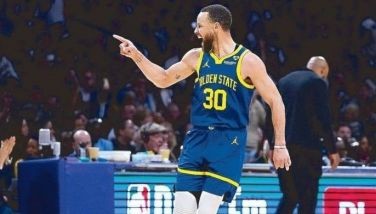Innocent purchasers

March 15, 2006 | 12:00am
A forged or fraudulent document may become the root of a valid title. This is the principle applied in this case of the Lee and the Chua families.
The case involved a 365 square meter land with a Maternity Hospital and School of Midwifery erected thereon situated in the heart of Binondo. The property was registered in the names of Lino and Leonila Chua (TCT 13935) whose family of five boys were also residing in the second floor of the building.
In November 1972, Lino died. So Leonila and her five surviving sons executed a deed of adjudication and partition of said property by virtue of which TCT No. 13935 was cancelled and replaced with TCT No. 142406 in the names of Leonila and her five sons, Nilo, Ed, Raffy, George, and Frank. In 1981 Leonila also died. By that time, Ed, Nilo and Frank were already residing in the USA, so George took over as sole administrator of the school until 1984 when he was joined in this task by Raffy’s wife Tita.
In 1985, when the family of Lee was on vacation in the USA, they happened to meet Ed, Frank and Raffy. In that meeting the property in Binondo was mentioned. The Lees through their father James expressed interest in said property. So Ed the eldest of the Chua siblings told James to make a formal offer for the property.
In 1986, George discovered that their brother Raffy had in the meantime succeeded in obtaining title to the property through a fictitious deed of sale dated way back on February 27, 1979 purportedly executed by them and their late mother. All their signatures were forged and using that forged deed, TCT 142406 was cancelled and TCT No 148821 was issued in the name of Raffy on April 15, 1982. To protect his interest and those of his brothers residing in the US, he convinced Raffy to surrender TCT 148821 to him for safekeeping and Raffy agreed.
But on May 8, 1986 Raffy through his wife Tita filed a petition for reconstitution of the owner’s duplicate of TCT 148821 alleging therein that it had been lost. On June 6, 1986, after obtaining the reconstituted title, Tita as attorney-in-fact of Raffy executed a Deed of Absolute Sale in favor of the Lees. Before consummating the transaction, two of the Lee brothers, Willy and Gary along with their lawyer went to the Register of Deeds to verify Raffy’s claim over the property and saw therein the Deed of sale executed by the Chua brothers and their mother in favor of Raffy. They also discovered that indeed TCT 148821 was issued solely in the name of Raffy canceling TCT 142406 issued in the names of Leonila and her sons. Based on their findings the Lees proceeded with the sale, paid the purchase price of P600,000 and obtained a new title in their name (No.169859) in lieu of TCT 148821.
Thus in 1991 when the Lee family refused to heed their demands, the Chua brothers filed a complaint before the Regional Trial Court praying for the declaration of nullity of the deed of sale purportedly executed by them in favor of Raffy as well as the deed of sale executed by Raffy in favor of the Lees; the cancellation of TCT 169859 in the name of the Lees; and for the return of the property to them. Can their action prosper and their prayers granted?
No. A person who deals with registered property in good faith will acquire good title from a forger and be absolutely protected by a Torrens Title. Every person dealing with registered land may safely rely on the correctness of the certificate of title issued therefore and the law will in no way oblige him to go beyond the certificate to determine the conditions of the property. The purchaser is not required to explore further than what the Torrens Title upon its face indicates in quest for any hidden defects or inchoate right that may subsequently defeat his right thereto.
In this case the Lee family is in good faith. They had exerted perhaps greater effort than that required by law to ascertain the validity of TCT 148821, and that nothing on the face of the document they examined should have led to the indubitable knowledge that it was derive from an infirm or spurious source. When Willy and Gary Lee endeavored to look beyond the title shown to them (TCT148821), they discovered in the Register of Deeds that the three documents that led to the issuance of said TCT in the name of Raffy are public documents imbued with regularity. There is no inconsistency in the documents and the dates of conveyance as well as the identity of the parties executing the conveyance.
Even if the Lees met the Chua brothers in the USA in 1985 while on vacation and happened to talk about the property, such circumstance alone is not enough to arrive at a conclusion that they were not innocent purchasers. They went there only for vacation and not with the intent of negotiating with Ed Chua on the perception that he was the co-owner of the property whose consent was indispensable to the sale. The presumption of good faith cannot be overcome by mere conjectures. So a forged or fraudulent document may become the root of a valid title if the property has already been transferred in the name of the forger when it was purchased by an innocent purchaser in good faith and for value. (Lim vs. Chuatoco, G.R. 161861, March 11, 2005 453 SCRA 308).
E-mail at: [email protected]
The case involved a 365 square meter land with a Maternity Hospital and School of Midwifery erected thereon situated in the heart of Binondo. The property was registered in the names of Lino and Leonila Chua (TCT 13935) whose family of five boys were also residing in the second floor of the building.
In November 1972, Lino died. So Leonila and her five surviving sons executed a deed of adjudication and partition of said property by virtue of which TCT No. 13935 was cancelled and replaced with TCT No. 142406 in the names of Leonila and her five sons, Nilo, Ed, Raffy, George, and Frank. In 1981 Leonila also died. By that time, Ed, Nilo and Frank were already residing in the USA, so George took over as sole administrator of the school until 1984 when he was joined in this task by Raffy’s wife Tita.
In 1985, when the family of Lee was on vacation in the USA, they happened to meet Ed, Frank and Raffy. In that meeting the property in Binondo was mentioned. The Lees through their father James expressed interest in said property. So Ed the eldest of the Chua siblings told James to make a formal offer for the property.
In 1986, George discovered that their brother Raffy had in the meantime succeeded in obtaining title to the property through a fictitious deed of sale dated way back on February 27, 1979 purportedly executed by them and their late mother. All their signatures were forged and using that forged deed, TCT 142406 was cancelled and TCT No 148821 was issued in the name of Raffy on April 15, 1982. To protect his interest and those of his brothers residing in the US, he convinced Raffy to surrender TCT 148821 to him for safekeeping and Raffy agreed.
But on May 8, 1986 Raffy through his wife Tita filed a petition for reconstitution of the owner’s duplicate of TCT 148821 alleging therein that it had been lost. On June 6, 1986, after obtaining the reconstituted title, Tita as attorney-in-fact of Raffy executed a Deed of Absolute Sale in favor of the Lees. Before consummating the transaction, two of the Lee brothers, Willy and Gary along with their lawyer went to the Register of Deeds to verify Raffy’s claim over the property and saw therein the Deed of sale executed by the Chua brothers and their mother in favor of Raffy. They also discovered that indeed TCT 148821 was issued solely in the name of Raffy canceling TCT 142406 issued in the names of Leonila and her sons. Based on their findings the Lees proceeded with the sale, paid the purchase price of P600,000 and obtained a new title in their name (No.169859) in lieu of TCT 148821.
Thus in 1991 when the Lee family refused to heed their demands, the Chua brothers filed a complaint before the Regional Trial Court praying for the declaration of nullity of the deed of sale purportedly executed by them in favor of Raffy as well as the deed of sale executed by Raffy in favor of the Lees; the cancellation of TCT 169859 in the name of the Lees; and for the return of the property to them. Can their action prosper and their prayers granted?
No. A person who deals with registered property in good faith will acquire good title from a forger and be absolutely protected by a Torrens Title. Every person dealing with registered land may safely rely on the correctness of the certificate of title issued therefore and the law will in no way oblige him to go beyond the certificate to determine the conditions of the property. The purchaser is not required to explore further than what the Torrens Title upon its face indicates in quest for any hidden defects or inchoate right that may subsequently defeat his right thereto.
In this case the Lee family is in good faith. They had exerted perhaps greater effort than that required by law to ascertain the validity of TCT 148821, and that nothing on the face of the document they examined should have led to the indubitable knowledge that it was derive from an infirm or spurious source. When Willy and Gary Lee endeavored to look beyond the title shown to them (TCT148821), they discovered in the Register of Deeds that the three documents that led to the issuance of said TCT in the name of Raffy are public documents imbued with regularity. There is no inconsistency in the documents and the dates of conveyance as well as the identity of the parties executing the conveyance.
Even if the Lees met the Chua brothers in the USA in 1985 while on vacation and happened to talk about the property, such circumstance alone is not enough to arrive at a conclusion that they were not innocent purchasers. They went there only for vacation and not with the intent of negotiating with Ed Chua on the perception that he was the co-owner of the property whose consent was indispensable to the sale. The presumption of good faith cannot be overcome by mere conjectures. So a forged or fraudulent document may become the root of a valid title if the property has already been transferred in the name of the forger when it was purchased by an innocent purchaser in good faith and for value. (Lim vs. Chuatoco, G.R. 161861, March 11, 2005 453 SCRA 308).
BrandSpace Articles
<
>
- Latest
- Trending
Trending
Latest
Trending

By BABE’S EYE VIEW FROM WASHINGTON D.C. | By Ambassador B. Romualdez | 22 hours ago

By FIRST PERSON | By Alex Magno | 1 day ago
Recommended

























